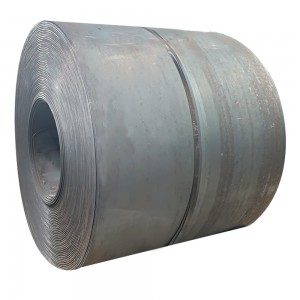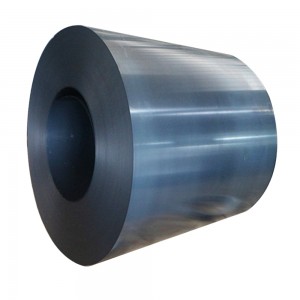
Hot Rolled Steel Coil
Hot-rolled coils are made of slabs (mainly continuous casting billets) as raw materials. After heating, they are made into strip steel by the rough rolling mill and the finishing mill. The hot steel strip from the last rolling mill of finishing rolling is cooled to a set temperature by laminar flow, and then coiled into a steel strip coil by a coiler, and the cooled steel strip coil.

Cold-rolled coil (annealed): Hot-rolled coil is obtained by pickling, cold rolling, bell annealing, flattening and (finishing).
That is, the biggest difference between hot-rolled coil and cold-rolled coil is the heat treatment process. (Annealing process)
Compared with hot-rolled coils, cold-rolled coils have a brighter surface and higher finish, but they will generate more internal stress, and are often annealed after cold rolling.
Hot-rolled steel strip: Hot-rolled steel strip, also known as hot-rolled steel strip, commonly known as hot plate. Hot-rolled steel strip with a width of less than or equal to 600mm, a steel plate with a thickness of 0.35-200mm and a steel strip with a thickness of 1.2-25mm. The strength of the hot-rolled steel plate is relatively low, and the surface quality is poor (with oxidation #92; low finish), but it has good plasticity. Generally, it is medium and heavy plate, cold-rolled plate, high strength, high hardness, high surface finish, and generally thin plate. As a stamping board.
Cold-rolled strip steel: cold-rolled strip steel and sheet steel generally have a thickness of 0.1-3mm and a width of 100-2000mm; they all use hot-rolled strip or steel plate as raw materials, and are rolled into products by cold rolling mills at room temperature.
The cold-rolled steel plate has a certain degree of work hardening and low toughness, but can achieve a better yield ratio. It is used for cold-formed spring sheets and other parts.
Generally, whether the sheet is hot-rolled or cold-rolled is related to the thickness and carbon content.
The required plate requires a thicker steel to be hot rolled. Cold rolling will produce large plastic deformation, which will cause residual stress in the material and cause stress cracking. At the same time, plates with higher carbon content are not suitable for cold rolling, and materials with high carbon content have high strength, which is not conducive to large plastic deformation.
Post time: Jul-12-2021

